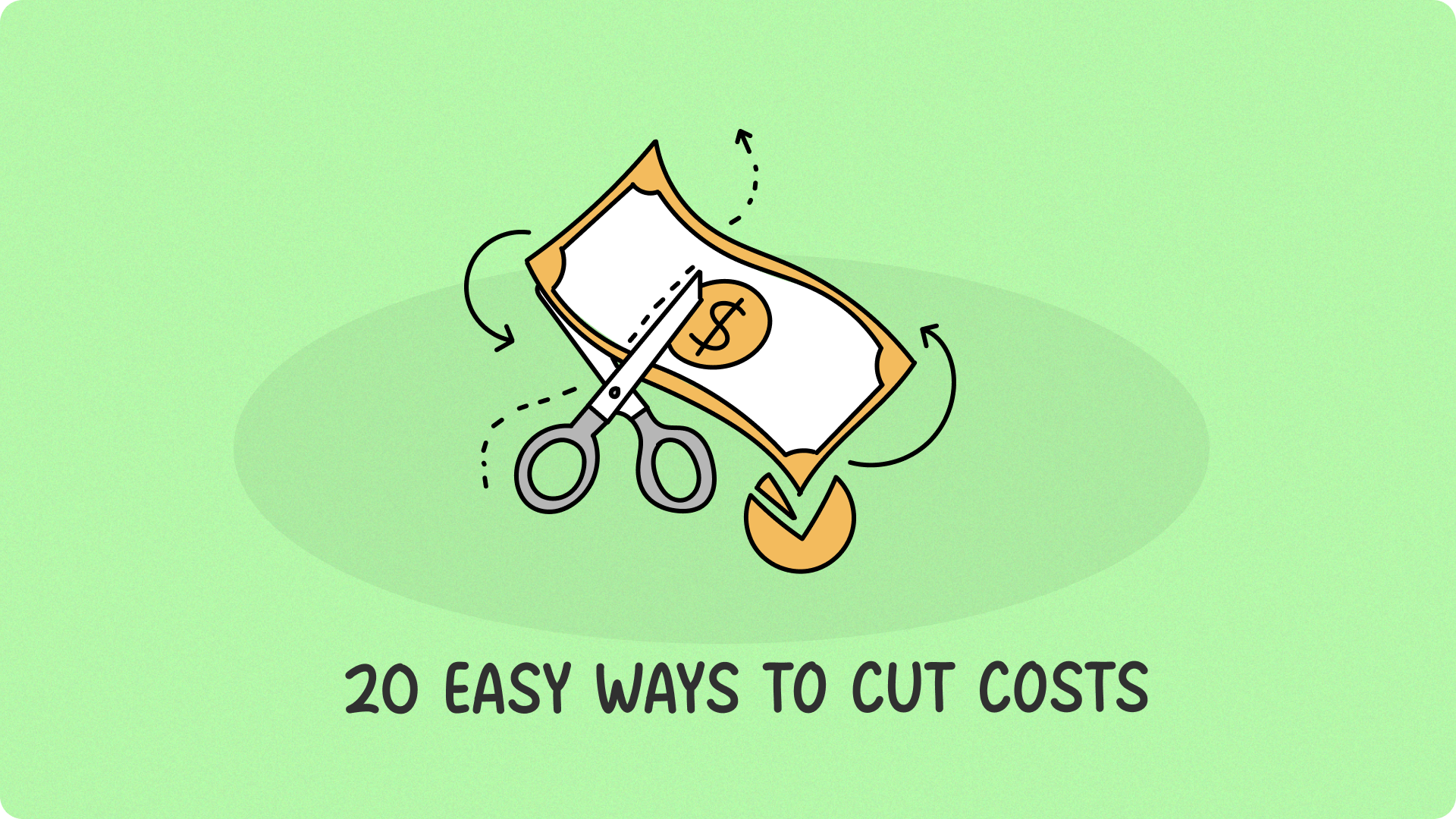When you’re running your own business, every dollar counts. Lately, expenses have been climbing faster than revenues. According to Biz2Credit’s Small Business Earnings Report, average monthly costs rose from $209,400 in January 2023 to $575,300 by April 2024.
The good news is that cutting costs does not require huge sacrifices or an entire operational overhaul. Often, the biggest savings come from small, strategic tweaks that add up over time. It’s about working smarter, not cheaper. Whether you’re a freelancer or a growing small business, here are 20 easy ways to trim the fat and boost your profitability today.
Table of Contents
- Slash Your Software & Tech Spending
- Optimize Your Workspace & Operations
- Market Smarter, Not Harder
- Rethink Your Team & Outsourcing
- Manage Your Finances Wisely
- Putting It into Practice
Slash Your Software & Tech Spending
1. Conduct a Subscription Audit. Are you still paying for that project management tool you haven’t used in six months? Go through your bank statements and list every recurring subscription. You’ll likely find services you can cancel, downgrade to a free plan, or consolidate.
2. Embrace Open-Source and Freemium Software. Before you pay for expensive software, check for powerful free alternatives. Use LibreOffice instead of Microsoft 365, GIMP instead of Adobe Photoshop, or the free version of tools like Mailchimp and Trello, which are often more than enough for small-scale needs.
3. Buy Refurbished Tech. You don’t always need the latest and greatest model. Reputable manufacturers like Apple and Dell offer certified refurbished laptops, monitors, and phones that work like new but come with a significantly lower price tag and a warranty.
4. Consolidate Your Web Services. Are you paying one company for your domain, another for web hosting, and a third for your business email? Many providers, like Google Workspace or Hover, allow you to bundle these services, often resulting in a simpler bill and a nice discount.
Optimize Your Workspace & Operations
5. Go Fully Remote (or Hybrid). The most significant overhead for many small businesses is rent. If your work allows, giving up a physical office can save you thousands per month in rent, utilities, and commuting costs.
6. Use a Coworking Space. If you need an office but don’t want the commitment of a long-term lease, a coworking space is the perfect middle ground. You get a professional workspace, meeting rooms, and amenities for a flexible monthly fee.
7. Go Paperless. Switch to digital invoicing, contracts, and note-taking. You’ll save money on paper, ink, printers, and postage, while also making it easier to find documents and reduce your environmental footprint.
8. Optimize Your Shipping. If you ship products, don’t just stick with one carrier. Use shipping software (like Pirate Ship) to compare rates and access discounted prices. Take advantage of flat-rate boxes, which can be cheaper for heavier, smaller items.
Market Smarter, Not Harder
9. Focus on Content Marketing. Create a blog, post helpful tips on social media, or start a simple newsletter. Providing value builds trust and attracts customers organically over time without the high cost of traditional advertising.
10. Launch a Referral Program. Your happiest customers are your best salespeople. Offer a small discount, a gift card, or a service credit to clients who refer new business your way. It’s one of the most cost-effective ways to acquire new, high-quality leads.
11. Master Email Marketing. Building an email list is a direct line to your audience that you own. Unlike social media, you aren’t fighting an algorithm. It consistently delivers one of the highest returns on investment in marketing.
12. Barter Your Services. Connect with other freelancers or small business owners. Need a new logo, but you’re a great copywriter? Find a graphic designer who needs help with their website content and propose a skill swap. It’s a win-win that saves cash, builds relationships, and provides access to a new professional network.
Rethink Your Team & Outsourcing
13. Hire Freelancers Over Full-Time Staff. When you need help, consider hiring a contractor for a specific project. You get specialized expertise without the long-term financial commitment of a salary, benefits, and payroll taxes.
14. Automate Repetitive Tasks. Use tools like Zapier or IFTTT to connect your apps and automate simple workflows. You can automate social media posting, data entry, and email responses, freeing up your valuable time to focus on revenue-generating activities.
15. Outsource Your Weaknesses. Struggling with bookkeeping or taxes? Trying to do it all yourself can lead to costly mistakes. Hiring a freelance bookkeeper or accountant for a few hours a month is often cheaper than the time you’d waste and the penalties you might incur.
Manage Your Finances Wisely
16. Renegotiate with Your Suppliers. If you’ve been a loyal customer to a supplier or service provider, don’t be afraid to ask for a better rate. The worst they can say is no, and you might be surprised at what they’ll offer to keep your business.
17. Review Your Insurance Policies Annually. Don’t just auto-renew your business insurance. As your business changes, so do your needs. Shop around for quotes each year to ensure you have the right coverage at the best possible price.
18. Switch to a Fee-Free Business Bank. Many modern online banks offer business checking accounts with no monthly maintenance fees, no minimum balance requirements, and unlimited transactions. Compare this to traditional banks that can charge $15-$25 per month for the same service.
19. Negotiate Credit Card Processing Fees. If you accept credit cards, those processing fees can add up. As your sales volume grows, contact your provider (like Stripe, Square, or PayPal) and ask if you qualify for a lower rate.
20. Pay Invoices Early for Discounts. Review the payment terms from your vendors. Some offer a small discount (typically 1-2%) for paying an invoice within 10 days instead of the usual 30. If you have the cash flow, it’s an easy way to save.
Putting It into Practice
Choose two or three strategies that hit your biggest costs first. Set clear targets (for example, reduce software spending by 20 percent or trim utility bills by 15 percent) and review your progress each month. Reinvest every dollar saved into activities that drive growth and strengthen your bottom line.
Ready to supercharge your savings?
Don’t wait for expenses to spiral. Book your free consultation today and let our experts uncover hidden cuts, streamline your finances, and unlock the cash flow you need to expand. Make every dollar work harder for you.
You may also like these articles:







